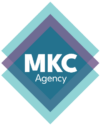Building the bridge of Transformation for Each Buyer
There’s a reason that impersonal sales pitches give people the willies (including us); the seller seems to care way more about themselves and making a quick sale than they do about genuinely getting to know you and helping you make your business better.
Effective marketing calls for authentic connection.
Prospective clients want to know that you care enough about them to find out what their headaches are (problems, issues, roadblocks to success), what they’ve been doing to fix it, and what they need to gain traction. Only then will they be primed and ready to hear about how your solution can bring them into their ideal situation.
While one-call closing is great (we have lots of advice about cold calling), building a working relationship on the principles of active listening and recording details will foster the trust necessary for a successful brand and marketing management project.
The Qualifying Call
I use a simple Qualifying Call Cheat Sheet to structure my calls. These are always under 15 minutes and focus on gathering the information necessary for a second, more action-oriented meeting. Here you will work to uncover more about the problems the new client has faced and get a picture of how to strategically pitch your solutions in future correspondence.
Let’s go into the sheet terms and what they mean in sequence.
SITUATION: In this phase of the conversation, you’re actively looking for ways to connect to the client by showing that you’ve looked into them and want to hear more about who they are. It’s about them, not you.
Rapport: Here, you are proving that you’re not a machine and not in it for yourself. You’ve done preliminary research, both into the company and some recent news regarding their organization. If you can connect personally with what they’re doing, let them know. Maybe you’re even a fan of their work or have experienced similar pains that their solutions service!
Why Are We Here: The two questions here are why your business and why now? Here you are discovering the reasons behind why the client either responded to the form on your website or is getting back to you from cold outreach. If you can get them to answer why they are getting in touch, you will often discover the “pain” that your solutions can then address.
About Their Business: This is your opportunity to hear from the company representatives themselves, explaining how they describe their business and the problems they are solving for their customers. By letting this come from their own words, you discover what your research couldn’t show you: all of the complexities not listed online, the nuances of their model, and new opportunities to connect. Personnel are often excited to share a slice of their world, and the information they provide will help sharpen your pitch later in the sales cycle.
STRETCH THE GAP: In this segment of the conversation, you want to pose guiding questions centred on exposing and then exploring the issues the client may be facing, while tracing a timeline of when the problem began, what solutions have been attempted and where their needs can be met by your offering.
Future / Present: After establishing the reasoning for their call, take some time to help them understand and articulate how connecting with your services could positively affect the future of their team in the long term. Where do they need to be, and how fast? This helps to establish a goal and aids you in understanding the internal or outsourced resources that are either enabling or inhibiting them in relation to these goals.
What’s Been Tried: Now that you grasp the present and the future, map the why of the call to their past efforts. What solutions have been implemented previously, how long were they in effect for, and did they work as anticipated? Understanding the triumphs and failures will help orient your pitch since most companies are not interested in repeatedly throwing money at solutions that haven’t worked.
Missing + Need: Going into more detail—what parts of past strategies worked and what parts didn’t? Identify the work going on with the problem and how they are solving it today. If they’re still talking, there’s a good chance you can take action through the following steps.
TAKE ACTION: As you move the conversation toward its conclusion, you want to avoid being pushy and rushing to sell. This part is meant to highlight what you’ve understood from listening carefully to the details of their situation and set the stage for offering a valuable solution that meets their needs.
Urgency: Establish an understanding of the timeline they are working with, and take care to not overpitch where solutions are not yet needed. It is better to be put on retainer for future jobs than canned as just another pushy agency. To help make your pitch seamless, try to identify major milestones or deadlines that may be causing pain within the team. Sell that as the urgency rather than how amazing our results are.
Recap: Prove you’ve been listening, and help reframe the conversation in terms of decoupled problems solutions: You have (a) causing you pain. You have tried (b) and (c) but the solution is still missing. You are considering (d) or (e). To me, it sounds like (our solution) is what you really need.
Who, How, and Next Steps: After you have pitched your solution, you can refine it into actionable terms by locating who will be brought into the process later, the decision-making bodies that would be required to get the ball rolling, and most importantly—the next meeting.
Offer the prospective client the chance to arrange their internal assets and leveraging bodies rather than pitch a deal on the spot. This ensures they do not step on any toes within their organization, and perhaps will allow them the opportunity to discover even more services we could be providing that will alleviate deeper pains.
Following a logical, well-designed structure when making a qualifying call to a prospective client can be a powerful tool in your marketing arsenal. It requires humility, a listening ear, and some delicate conversational footwork to position yourself for another, more action-oriented meeting. But when it’s done right, you’ll find you’ve developed an authentic relationship with the client that often leads to a meaningful and successful business association.
Are you looking to bridge the gap with a client, but need help getting your plan just right? Do you need a hand to grow your business with other similarly successful marketing strategies? We can help. Megan Killion Consulting is a team of dedicated, experienced professionals with 15+years of experience who have the know-how to help you reach all your marketing goals. Give us a shout, and we can start working together to meet your unique business needs.

